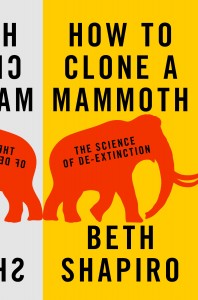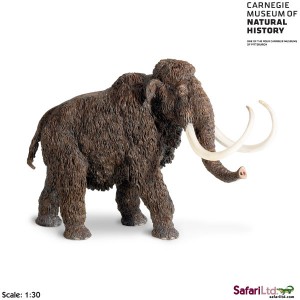Woolly Mammoth DNA Spliced into Asian Elephant Skin Cells – Cloning a Woolly Mammoth
A team of geneticists led by Professor George Church at Harvard Medical School have succeeded in merging fourteen genes from the Woolly Mammoth genome into skin cells from an Asian elephant that were being grown in a petri dish. This is the first time that viable, hybrid cells have been produced. Preliminary checks indicate that the cells are functioning normally, but this research has yet to be formally published and no peer review of the evidence has taken place.
Cloning a Woolly Mammoth
The team at Harvard, working in the largest research laboratory on the campus, have been involved in the mapping of the Woolly Mammoth genome and Mammoth experimentation for several years. Using genetic material recovered from long dead, but very well-preserved Woolly Mammoth carcases from the frozen wastes of Siberia, the team are hoping that one day they will be able to clone a viable Woolly Mammoth and perhaps re-populate the tundra and the steppes with these elephants.
George Church is the Robert Winthrop professor of Genetics at Harvard. He explained that although getting functioning cells was an important step, this was just part of a very long process and a Mammoth clone was still a long way off.
Outlining the research the professor explained:
“We won’t be seeing Woolly Mammoths prancing around any time soon, because there is more work to do. But we plan to do so.”
Mammoth DNA
Inserting Woolly Mammoth genes such as those responsible for helping this type of elephant adapt to a cold environment can be regarded as an important break through, if the cells produced are functioning as they would have done without the spliced Mammoth material. The next stage is to find a way of turning the hybrid material into specialised cells capable of producing the correct Mammoth traits and characteristics. Asian elephants, the closest living relative to the extinct Mammoth, could be used as surrogate mothers, however, a number of animal rights groups have protested against the idea of using elephants in cloning experiments so any cells produced that would lead to an embryo may have to be adapted so that they can grow in an artificial womb.
Once an embryo had been created then there would be other difficulties, getting the baby to term, as well as the implications for science and the wider community confronting the ethical and moral issues surrounding the “de-extinction of the Woolly Mammoth”.
One Step Closer to Cloning the Woolly Mammoth?
Picture credit: Everything Dinosaur
Activity Idea aimed at KS3 – Genetics and Evolution
Have the class research independently into the work being undertaken to clone the Woolly Mammoth (Mammuthus primigenius), then debate the moral and ethical issues raised by genetic experimentation to bring back a long extinct animal.
- What are the implications for attempts to safeguard, extant endangered species?
- What are the moral arguments for and against cloning in this case?
- What implications could there be for research into the human genome and possible human cloning in future?
Everything Dinosaur stocks a wide range of prehistoric animal replicas including models of Woolly Mammoths: Models of Prehistoric Mammals.



